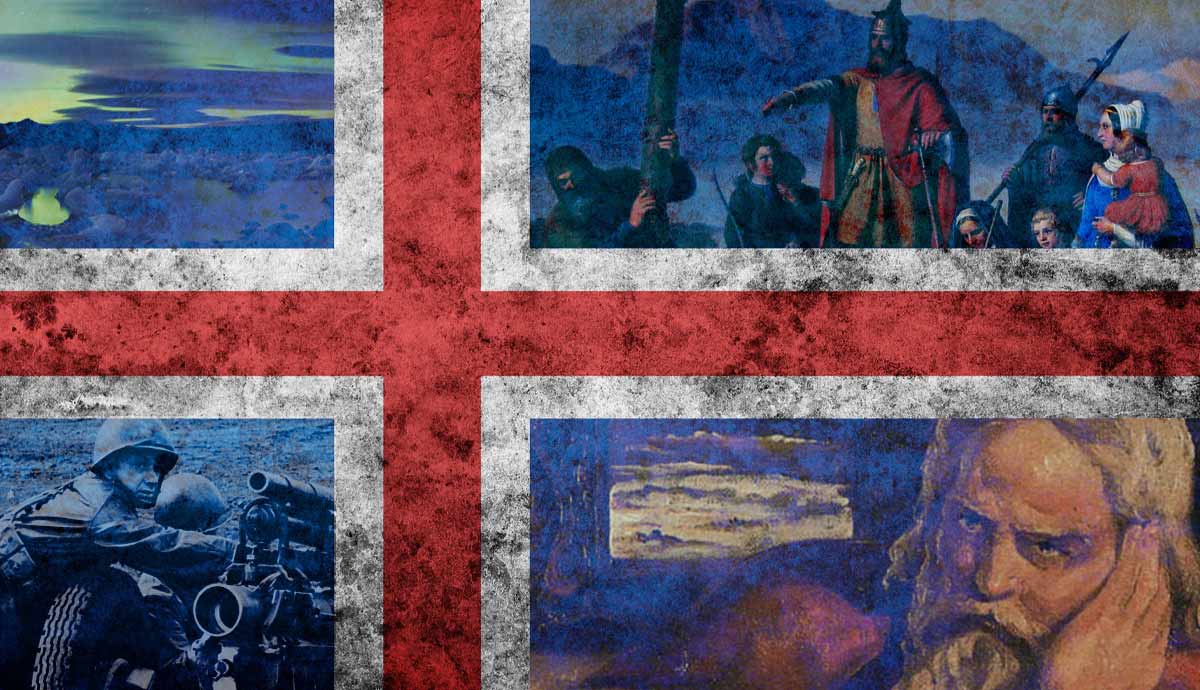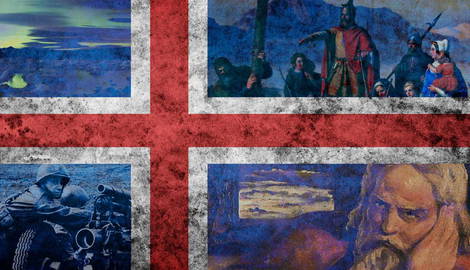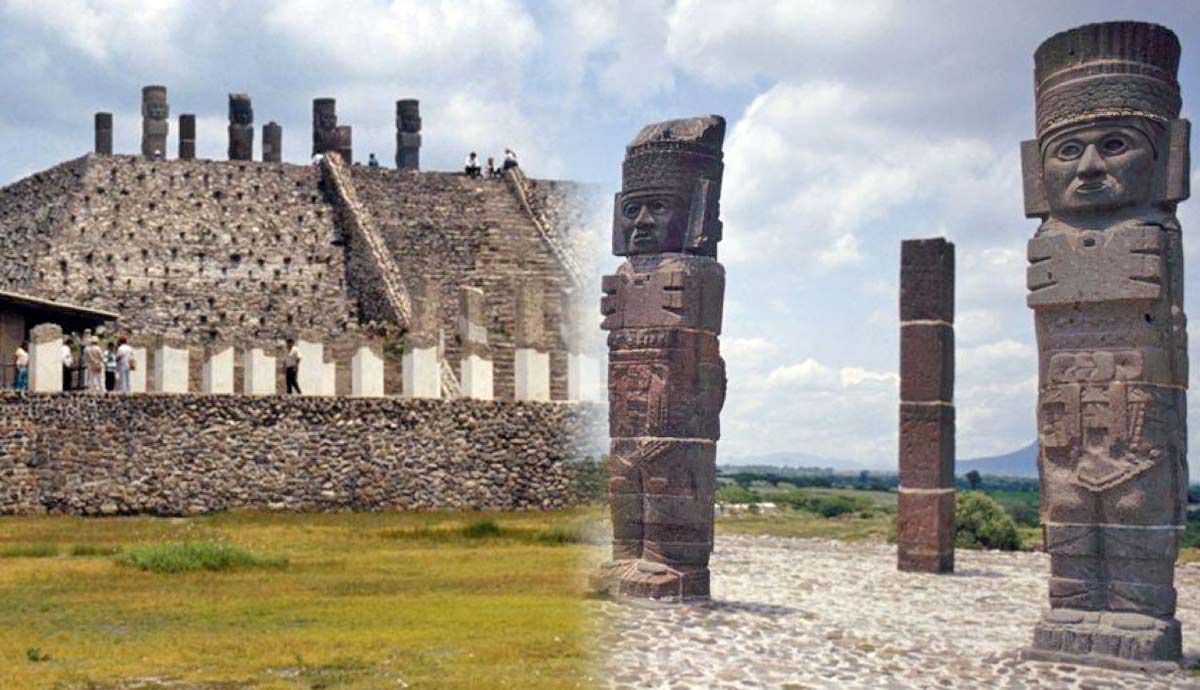
A spectacular land of black beaches, volcanoes, and hot springs, Iceland is a country like no other. However, its wild and rugged features are not the only things that make it such a fascinating place.
It is a place rich in culture, replete with myth and legend from elves to gods. Unique traditions, interesting cuisine, and alien landscapes make Iceland a place of stark contrasts and hardy people who make their home on an enthralling island known as the “Land of Fire and Ice.”
This is Iceland’s history, from intrepid sailors to the Cod Wars and beyond.
Who Discovered Iceland?

Located in the icy cold regions in the extreme north of the Atlantic Ocean, Iceland is not a place where one would expect to find many explorers. Its discovery, however, is a source of academic debate.
The Greek explorer Pytheas went on a voyage of discovery around 325 BCE. He described how six days’ travel north of the island of Britain brought him to a land near a frozen sea. He named this land Thule and described it as a place of midnight sun. Pytheas’ works, however, did not survive, and what we know comes from excerpts quoted and paraphrased by later authors. There is also no way of knowing if the island Pytheas referred to was indeed Iceland or perhaps one of the other islands in the North Sea, such as one of the Faroe Islands.

According to Landnámabók (“Book of Settlements”), a medieval record from the 12th century, Iceland was inhabited by a settlement of Irish monks prior to Norse settlement. The same book mentions that the first Norseman to discover Iceland was Naddodd, a Faroese settler who got lost and found himself along the east coast of Iceland.
A Swedish Viking by the name of Garðar Svavarsson, along with his group of sailors, would also discover Iceland by accident. He stayed on the island for a winter before returning home.
The first mention of a Norseman deliberately sailing to Iceland was that of Hrafna-Flóki Vilgerðarson, another Viking of Swedish descent. He spent some time there and found the island abundant in resources when the winter passed. He returned to Norway and informed others of his discovery.
Norse Settlement

The Landnámabók states that the first permanent settler was Ingólfr Arnarson, who arrived on the island in 874 and began the settlement of Reykjavík with his wife, Hallveig Fródadóttir. Soon after, a group of 400 settlers arrived, mainly from Norway, to make their homes in Iceland.
Those who chose to leave their homes in Norway included farmers and chieftains who were dissatisfied with the growing power of King Harald I (Harald Fairhair), who was busy unifying Norway and bringing petty kingdoms under his control.
Archaeological and geological evidence confirms the date of the first settlement to around the 870s.
Although this story is the generally accepted version of events, it is also possible that the first settler was a man named Náttfari, a member of Garðar Svavarsson’s crew who chose to stay behind.
The Íslendingabók (“Book of Icelanders”), written by 12th-century Icelandic priest Ari Þorgilsson, states that the monks who lived on the island left their settlement due to their dislike for heathens. It is, however, also plausible that these monks were driven out by force.
Adoption of Christianity

As the settlement grew, legal and administrative functions were required. The Althing was created in 930 and still exists today as the world’s oldest parliament. Despite having its own laws and essentially being an independent polity, Iceland was under the jurisdiction of Norway. At the end of the 10th century, King Olaf I Tryggvason (963-1000) ensured Iceland’s adoption of Christianity by sending missionaries to convert the Icelanders.
However, small groups of Christians had existed beforehand and grew in number. In 961, Eldgjá volcano erupted, blanketing the sun and releasing huge amounts of sulfuric gases into the atmosphere. Evidence of its eruption can be found as far away as China. Being close to the epicenter, many Icelanders took the events as a sign from God to convert to Christianity.
Initially, attempts at Christianization encountered difficulty, but many Icelanders were dependent on Norway as their main trading partner, and adopting Christianity ensured peace between Norway and Iceland.
The Christian religion became the recognized religion of Iceland by legal decree from the Althing around 1000 CE. This came after the collective priesthood (goðar) of the Norse Asatru religion gathered at the Althing to decide the case for Christianity. Their speaker, Thorgeir Thorkelsson, a pagan, declared that all Icelanders had to be baptized but that those who worshiped the Norse gods could do so as long as it was in secret.
This compromise managed to suppress any leanings toward religious conflict, and the people prospered while settlements continued to grow.
An Era of Prosperity

Modern scholars think Iceland’s early settlements were relatively successful. Sheep and cattle adjusted well to the climate and thrived in this new land. However, certain resources were difficult to obtain. The land was not very suitable for agriculture, and grains and copious amounts of timber had to be imported.
While Iceland supported forests of birch trees, this resource was not plentiful enough for the needs of the growing settlements.
Across the ocean, Norway was able to supply Iceland with all its needs while Iceland offered goods such as wool and homespun cloth in return.
Conflict

In the 13th century, an era of peace gave way to an era of conflict. Many people in Iceland were split over allegiances. Some wished to remain in commonwealth union with Norway, but others wanted Iceland to become a subject to Norway.
Icelandic chieftains took sides, and by the 1220s, decades of skirmishes would begin to decide the island’s future. This period is known as the Age of the Sturlungs, named after the Sturlung clan, a vassal of the Norwegian king, Haakon IV. Snorri Sturluson, the famed historian, poet, and politician responsible for much of what we know about early Icelandic history, was also born into the Sturlung clan.

In 1238, the conflict culminated in the Battle of Örlygsstaðir, the largest battle ever fought on Icelandic soil. It is estimated that around 2,700 warriors took part in the battle, and although it ended in defeat for the Sturlung clan, the war was not over.
The conflict continued until 1262, when the supporters of Haakon IV finally achieved victory, and Iceland became a vassal of Norway.
In 1380, Iceland changed hands and became a subject of the Crown of Denmark. Norway became part of the Kalmar Union, with Denmark as the dominant polity.
After the Reformation, and with strong ties to Lutheranism in Denmark, the same practices were pushed in Iceland, and the island was converted.
Shifts in Trading Partners

Denmark saw little need for Icelandic goods, and times became difficult for the Icelanders. This was in addition to a mini ice age that made growing crops in Iceland even more difficult, and the population suffered as a result.
New trade partners arrived, however, into the commercial vacuum. English fishermen were drawn to the plentiful waters of Iceland and made frequent trips to the north, where they traded with the locals.
From the 16th century, trade with Germans increased rapidly. The Germans would lease fishing boats to the Icelanders, buy the fish, and export them to the rest of Europe. By the middle of the 17th century, Dutch and French traders also became common in Icelandic waters.
In 1602, the Danish government ordered Iceland not to trade with anyone other than Denmark. However, this decree was difficult to enforce, and many Icelanders, as did their trading partners, simply ignored it.
Slave Raids

In the summer of 1627, Barbary pirates descended upon the coasts of Iceland, raiding settlements and abducting people to be sold in the slave markets. Although the raids became known as the “Turkish Abductions,” they had nothing to do with the Turks at all. The name was an umbrella term to describe all Mediterranean Muslims.
Around 400 people were enslaved, and efforts were made to get them back. Ransoms were collected and stolen more than once before any of the slaves were freed. In all, around 50 people were freed from slavery.
The “Mist Hardships”

Throughout the 18th century, climatic conditions in Iceland made life difficult again. The nation underwent many decades of cooling, which had a negative effect on crop production.
So when Lakagígar, a volcanic fissure, started erupting in 1783, the situation went from bad to devastatingly miserable. From June 1783 to February of the following year, the volcano spewed basaltic lava and a considerable amount of tephra. For the Icelanders, this event was a cataclysmic disaster, with toxic clouds that blocked out the sun and poisoned livestock.

To make matters even worse, 1784 saw a series of earthquakes that ruined many farms.
The Icelanders starved, and the Crown considered the cost of evacuating these people to Denmark too high to be worth it. In all, the Móðuharðindi (Mist Hardship) claimed the lives of around twenty to twenty-five percent of the Icelandic population, with some sources specifying a total of around 9,000 people.
Independence & Occupation

In the 19th century, a strong independence movement arose in Iceland and, step-by-step, the island was granted autonomy in a process that spanned over a century. With the vassalage to the crown of Denmark, the Althing had been reduced to a court of law and was eventually disbanded in 1800.
Following pressure for more autonomy, however, the Althing was reconstituted in 1845 as a consultative body to the crown, and a constitution was adopted in 1874, which granted the Althing joint legislative power with the Crown. The first years of autonomy weren’t easy. Iceland was suffering from a demographic shift as many people were emigrating, mainly to Canada and the United States. Another volcanic eruption in 1875 brought on more hardships as farmers struggled.
Nevertheless, the Icelandic people endured and survived into the 20th century. In 1918, Iceland was granted sovereignty in personal union with Denmark.

At the outbreak of the Second World War, Iceland remained neutral, and the British feared the Germans would exploit this and use Iceland as a base of operations in the North Atlantic. To prevent this, the British invaded Iceland, took control of it militarily, and transferred control to the United States. There was no fighting, and the only death was that of a British Marine who committed suicide en route.
The British had barely been trained, and the journey resulted in such harsh conditions that many of the men became violently ill. Nevertheless, the Icelanders did not put up a fight, and although many protested, there was generally an air of cooperation.
Despite the occupation in 1941, Iceland requested full independence from Denmark, which was granted. On June 17, 1944, Iceland became a fully independent republic.
Cold War & Cod War

With the emergence of the Cold War, Iceland became a strategic asset for NATO. Iceland had helped form NATO, and the United States kept a military presence at Keflavík Air Base.
From the 1950s to the 1970s, a different kind of war was taking shape. Iceland’s need to expand its fishing industry led to diplomatic conflict with Britain over control of the oceans. A series of disputes led to life-threatening situations where fishing boats were escorted by military vessels. Boats were rammed, and in 1973, an Icelandic teenager lost his life as a result of his patrol boat being rammed by the HMS Apollo, a Royal Navy frigate.
Eventually, the British relented in 1976 and allowed Iceland to expand its territorial waters.
Iceland in the 21st Century

Events in Iceland continued to catapult the country into international headlines. In 2008, three banks collapsed after a culmination of events, starting with the deregulation of banks in 2001. The event has been described as the largest bank collapse in history. It exists as a cautionary tale against unfettered and unregulated banking in an event that also wiped out 80% of Icelandic stocks.

Barely had Iceland begun to recover when volcanic events began around Eyjafjallajökull glacier in 2010. From March to June, ash spewed into the air, causing major disruptions to air travel over Western Europe. The Icelandic agricultural sector was also hit, but not to the same degree as volcanic eruptions had done before.
Despite these challenges, Iceland has managed to survive and thrive in the modern world.

Iceland is a country of rugged beauty with spectacularly dangerous landscapes. Nature has provided for the people of Iceland but also provided massive challenges. The people of Iceland have endured and built a unique society that is prosperous and dynamic, able to adapt to the harsh difficulties that nature and circumstance throw at it.










